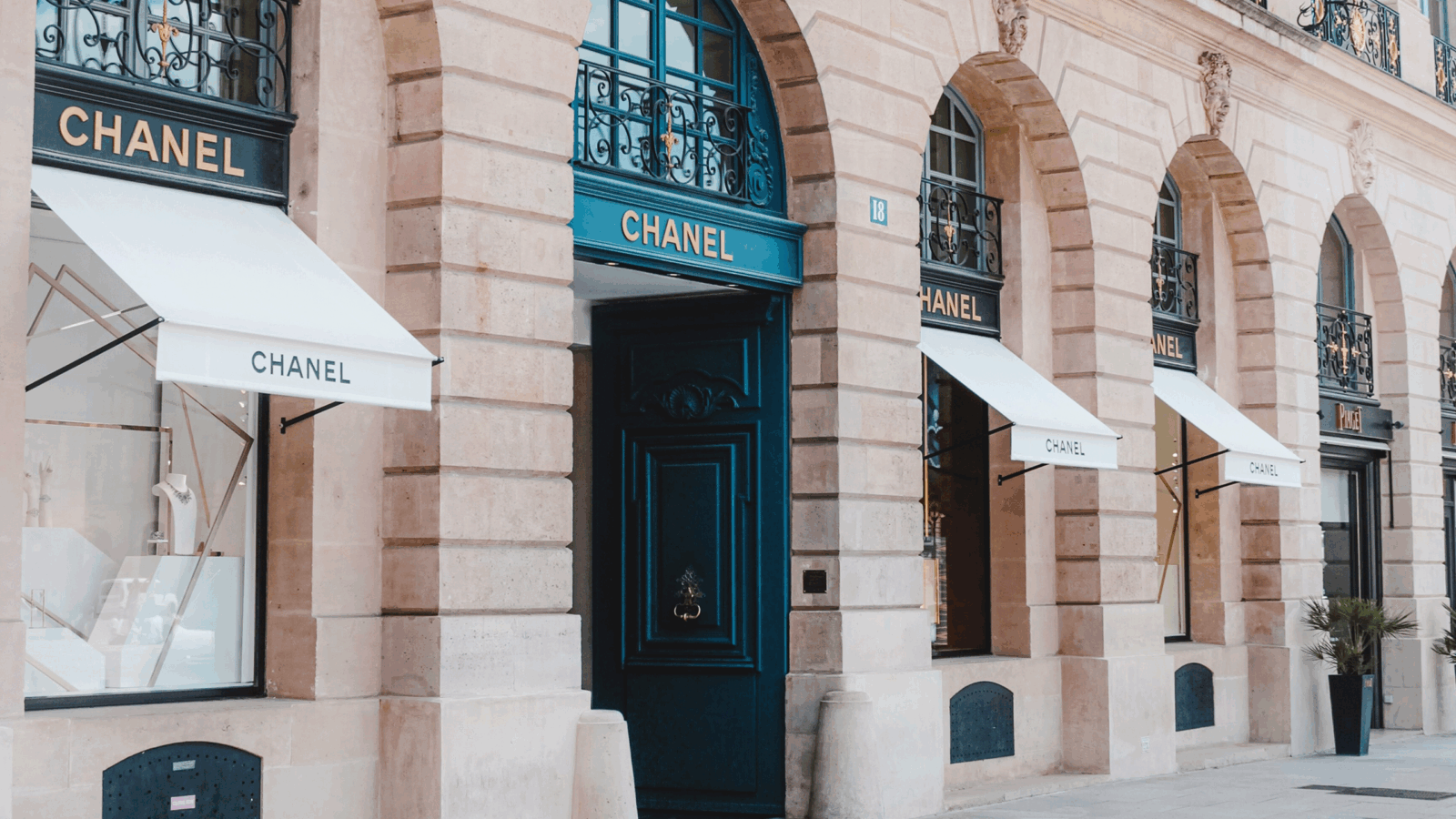Good morning, and happy Monday.
A US consortium including the San Francisco 49ers investment arm announced Friday that it has bought a majority stake in Rangers, one of Scotland’s two most famous football clubs.
Rangers’ fanbase is traditionally affiliated with Protestant Unionism, while fans of their crosstown rivals in Glasgow, Celtic, traditionally come from the Catholic community. Coincidentally, the 49ers fanbase has a spiritual nickname, the 49er Faithful. Fans of the rival Dallas Cowboys, who lack that moniker, are nonetheless united by an unwavering if sometimes unfounded belief that their team will be making the Super Bowl this and every other year.
Luxury Brands Sweat Consumer Discounting After Price Hikes

Everything is not so “gucci” in the world of luxury goods.
Brands that cater to the uber-wealthy, including LVMH’s Christian Dior, Kering’s Gucci, and Chanel, saw a dip in sales for the first quarter of 2025, continuing a slowdown that started last year. While CEOs of luxury goods retailers are chalking up the challenging environment to macroeconomic turbulence, market analysis suggests the industry’s excesses of the past few years could be contributing to weakness.
Greedflation?
While luxury goods companies have largely been immune to the state of economies, the decline that started last year could accelerate into 2025, Morgan Stanley analysts Eduoard Aubin and Arunima Sinha said last week during a state-of-the-market discussion at the firm’s luxury conference in Paris.
Chinese nationals and Americans, the two cohorts expected to drive more than 50% of total spending in the next three to five years, are traveling less. Fewer Americans are heading to Europe, and fewer Chinese people are flying to Japan, which could translate to weaker sales in the second quarter than in the first, according to the analysts. Waning business optimism about China and weakness in US consumer spending also do not bode well for the industry.
Chanel, which usually raises prices a couple of times a year, is in wait-and-see mode on potential hikes, global CFO Philippe Blondiaux said in a recent interview with Vogue Business.
Some luxury retailers are chugging along, with Hermès and Cartier parent Richemont reporting sales growth in the first quarter of 2025 from the year prior. The price of the smallest Birkin bag rose to $12,700 in May, per Sotheby’s.
Luxury brand companies’ best years coincided with the largest increases in US households’ net worth. Profits nearly tripled between 2019 and 2024, with the four biggest luxury companies — LVMH, Hermès, Richemont, and Kering — taking the lion’s share, per a McKinsey report published in January. Price hikes, some of which were as high as 100% on certain goods, accounted for approximately 80% of industry growth during that period, the report stated.
Demand for leather handbags, branded jewelry, and watches reached a fever pitch as US households’ net worth rose by $51 trillion between 2020 and 2024. Much of that went to the top 20%, or households earning more than $160,000, which were supported by a rise in financial wealth (Read: stock markets going up):
- “If we don’t have these very large increases in financial wealth, we may not have very large increases in planned consumption for this particular cohort,” Morgan Stanley’s Sinha said.
- There’s also an ongoing debate about whether the price hikes during that period of outsize industry growth shut out aspirational buyers. “For the sector to grow in the medium- to long-term, it cannot just rely on millionaires and billionaires. It has to increase, to recruit from the middle class,” Aubin said.
Yes for Less: Recruiting might be difficult. Value-conscious shoppers’ behavior lately shows regular folks are prioritizing function over fashion. James Conroy, chief of Ross Stores, said in an earnings call in May: “In terms of customer behavior, perhaps you could say there’s a little bit of a shift towards more functional items versus discretionary items.”
Meet The Genius Who Invented Plastic That Dissolves In Water

The world produces 450 million metric tons of plastic waste each year. Microplastics are seeping into our oceans and food. They even show up in our bodies. So you can imagine how revolutionary a new kind of plastic that completely dissolves in water would be.
Thatʼs exactly what Timeplast created.
The company patented a water- soluble, time-programmable plastic that vanishes without harming the environment. It has the potential to disrupt everything from water bottles to packaging, and even materials beyond plastic.
Major players are already partnering with Timeplast — they had 6,000% revenue growth in a single month.
Now you can invest in Timeplast as it scales in its $1.3 trillion market. Become a Timeplast shareholder here.*
No ‘Gray’ Area in New York Times’ AI Deal with Amazon
Spoiler alert: The answer to today’s Wordle is B-E-Z-O-S.
In a first-of-its-kind deal for the historic paper of record, The New York Times last week inked a deal to license its vast editorial library for use in Amazon’s various AI platforms. The agreement comes as the Gray Lady sues OpenAI and Microsoft for alleged copyright infringement, one of the major legal battles in the AI-spawned era of copyright war.
Pitch Bot
Under the licensing deal (financial terms still undisclosed), Jeff Bezos’ e-commerce/cloud computing/digital media giant can showcase NYT news articles, recipes, and other material across its consumer-facing AI programs. Ask Alexa how to scramble eggs and, deep down in the layers of the neural network, that could be Kenji López-Alt speaking to you. It’s a first for the NYT but hardly for the rest of the industry. Condé Nast, The Atlantic, Axel Springer, the Associated Press, and the Bezos-owned Washington Post have all struck similar licensing agreements with OpenAI. In a situation similar to the NYT’s, with one of the same players, News Corp is concurrently suing Perplexity AI over copyright-infringement claims and licensing its content to OpenAI.
Translation: If you want your chatbots to train on and feature these companies’ content, pay up. But just how much is news content worth to the AI industry? Depends on whom you ask:
- According to The Information, OpenAI offers publishers as little as $1 million to $5 million annually to license their content. In late 2023, the NYT reported that Apple was offering $50 million multiyear deals to license news content for AI model training.
- That’s small potatoes compared with the “billions of dollars in statutory and actual damages” the NYT is claiming in its suit against OpenAI. In that case, the NYT is essentially claiming that OpenAI and Microsoft unlawfully used copyrighted material to train its chatbots, which sometimes appeared to respond with content copy-pasted right from the NYT, siphoning away valuable clicks and subscriptions from the NYT itself while helping OpenAI grow into one of the most valuable private companies in the world.
Fair Use It or Lose It: AI firms tend to argue that their models are trained on publicly available data — “fair use” under copyright law. Whether the law agrees or not is still being sorted out, though it seems clear the AI industry sees its existence hinging on courts agreeing with its interpretation. In the UK, a coterie of high-profile performing artists, including Elton John, Dua Lipa, and Ian McKellan, are pushing for a law that would require artists to opt-in to their works being used to train AI models. Last week, former Deputy Prime Minister and ex-Meta executive Nick Clegg told British outlet The Times that passing such a law in the UK, while other countries do not, “would basically kill the AI industry in this country overnight.”
Can US Tourism Bounce Back Amid Trade War?
Here’s one delay the tourism industry is actually happy to see.
Last week, shares of cruise companies and travel-booking firms surged after the White House announced it would delay its (possibly illegal) 50% tariffs on the European Union until at least July 9, allowing time for the two sides to reach a deal. Could it be the epicenter of a spring travel bug outbreak that the US tourism industry sorely needs?
Cruise Control
2025 is projected to be an unusually terrible year for the US travel industry — and only the US travel industry. At least, that’s according to data from the World Travel & Tourism Council (WTTC) shared with Bloomberg in May, which showed that the US sector is expected to lose $12.5 billion in revenue this year as global travelers become increasingly frustrated with “America First” policies. In fact, the US is the only country out of 185 global economies that the WTTC projects will lose revenue this year.
However, cooling trade tensions could help shift the tides, especially for the cruise industry (as any seasoned passenger knows, Europeans love their cruises):
- Shares of Carnival popped on the EU tariff delay news last Tuesday and climbed more than 7% by the end of the week; shares had been down more than 10% year-to-date ahead of the tariff delay. Royal Caribbean shares similarly climbed more than 10% last week, while shares of Norwegian Cruise Lines and Viking Cruises climbed roughly 5% and 3%, respectively.
- Bookings platforms similarly rode the market wave (the S&P 500 climbed more than 2% last week by market close on Friday). TripAdvisor, which has sunk so far this year, bounced back 5% last week, while Booking Holdings climbed more than 4% and Airbnb more than 3%.
Ski Bummed: Cruises aren’t the only alternative tourism business in need of a bump. Last week, ski king Vail Resorts announced the departure of CEO Kirsten Lynch following a winter season that proved particularly tough sledding. Her replacement? Former CEO Rob Katz, who revolutionized the company and the industry during his prior tenure by introducing the multi-resort “Epic Pass,” which now accounts for roughly three-quarters of all Vail Resort visitors. The company reported that sales of the pass were down this year, as part of a more than 3% overall decline in ski visits. Which means the slopes ahead are looking — in ski terms — rather gnarly.
Extra Upside
- Slowdown at the Checkout: Consumer spending growth slowed to 0.2% in April from 0.7% in March.
- Not So Fast: White House economic officials insisted over the weekend that tariffs are not going away, even as a federal court ruling has left President Trump’s so-called “reciprocal” tariffs in legal limbo.
- Want To Get Even Smarter About Stocks? Join 200,000 investors who get Opening Bell Daily in their inbox. It’s packed with markets and macro analysis you won’t find anywhere else. Subscribe for free.**
** Partner
Just For Fun
Disclaimer
*This is a paid advertisement for Timeplast’s Regulation CF Offering. Please read the offering circular at invest.timeplast.com.

